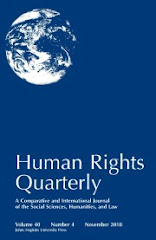 Ioana Tudor (Gide Loyrette Nouel, Warsaw) has published The Fair and Equitable Treatment Standard in the International Law of Foreign Investment (Oxford Univ. Press 2008). Here's the abstract:
Ioana Tudor (Gide Loyrette Nouel, Warsaw) has published The Fair and Equitable Treatment Standard in the International Law of Foreign Investment (Oxford Univ. Press 2008). Here's the abstract:The treatment of foreign investors and of their investments on the territory of a host State is often subject to a bilateral investment treaty (BIT) signed by the national State of the investors and the host State. These BITs usually contain a clause in which the two States offer fair and equitable treatment (FET) to the foreign investors on their territory. Moreover, this clause has become a norm of customary law, implying that investors may rely on it even outside the context of the BIT. Foreign investors whose rights under this clause have not been respected may bring the State in front of an international tribunal. This book analyses not only the conventional and customary framework se the FET clause but also its scope and all its applications in the existing case law.
This book tackles the standard of fair and equitable treatment by applying four conceptual frames: the legal basis of FET, its nature as a standard, its content and finally the implications of its breach. The first two chapters explore the two classical sources of international law as possible sources for FET. The main sources of FET lie in a rich conventional framework, mainly bilateral and regional. Yet the high number of BITs does not appear to offer a uniform model of FET clauses, quite the opposite; the book offers a classification of the FET clauses found in more than 400 BITs. Having concluded that the conventional framework is essential to FET, the book turns to the examination of the possible customary character of FET and argues that the view equating FET with the International Minimum Standard is erroneous and it limits the scope of FET. Alternatively, it suggests that the FET standard is an independent standard of customary nature. Then the book looks at the nature of FET, that of being a standard and retains three direct consequences for its meaning: its flexibility, the absence of a fixed content and its evolutionary character. With these three characteristics in mind, it proceeds to the third conceptual framework, the content of FET. Although no fixed content may be given to it, it identifies and develops each one of those situations in which the FET standard has already been applied. Finally, the last conceptual framework aims at discussing the final act of a FET claim, i.e. the amount of compensation awarded. It argues that FETis a standard which balances the interests and behaviours of both the States and the investors, at the stage of compensation.





